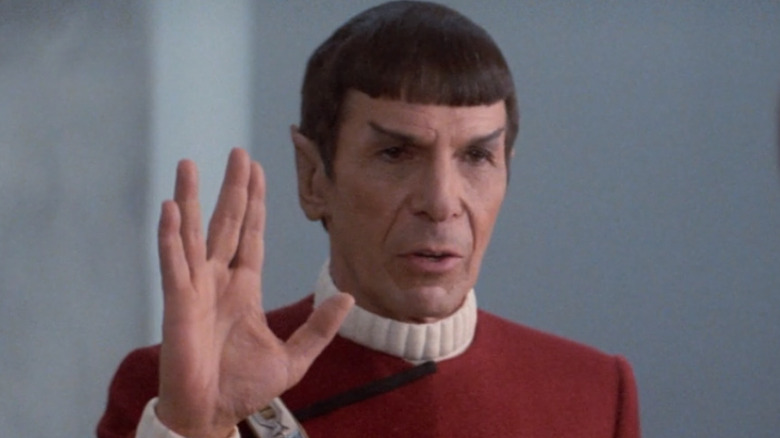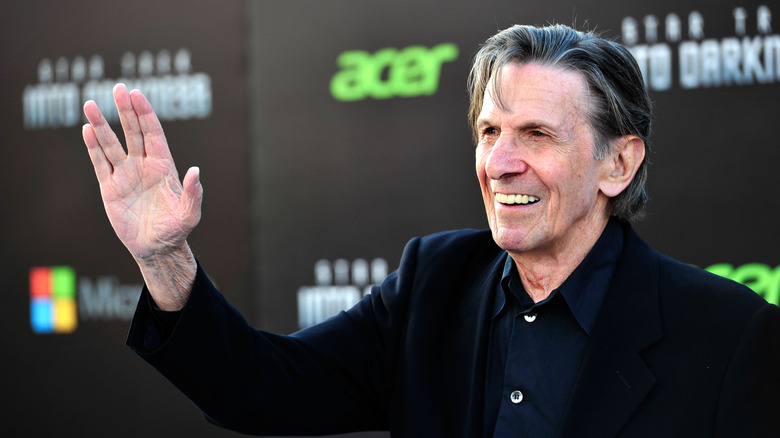Spock's Vulcan Salute On Star Trek Came Straight From Leonard Nimoy's Childhood
Since its first use by Leonard Nimoy in the original "Star Trek" television series, Spock's Vulcan salute has become one of the most-recognized hand gestures in the history of pop culture. Accompanied by the blessing "Live long and prosper," it telegraphs both the idiosyncrasy and integrity of the Vulcans, an alien race so central to the "Star Trek" mythos. People recognize it around the world, and well beyond the massive ranks of Trekkies. it. It got its own emoji in 2014. And after Nimoy passed away in 2015, astronaut Terry Virts tweeted a picture of the Vulcan salute on the International Space Station, looking out over Nimoy's hometown of Boston, confirming that the hand gesture has indeed been made in space.
This isn't to say that it hasn't caused problems — albeit, minor ones — for some of the franchise's cast. Not everyone's manual dexterity allows them to separate and close their fingers in the way Spock is able to. Zachary Quinto, who played Spock in J.J. Abrams' Kelvin timeline, reportedly had trouble getting his fingers into the right position for the Vulcan salute, and ultimately had to use glue. Even William Shatner, Captain Kirk himself, reportedly struggles to make the sign after all these years.
Still, the salute is so ubiquitous that it's difficult to imagine a time when it didn't exist, let alone ponder its origin. That origin, however, provides a unique glimpse into Nimoy's upbringing, and, in turn, one of the many passions that endured throughout his life.
Leonard Nimoy was inspired by a visit to a Jewish Orthodox synagogue
Born in 1931 to Ukrainian immigrants, Leonard Nimoy was raised Jewish. Speaking with the National Yiddish Book Center in 2013, he described his experience of being taken to an Orthodox synagogue in Boston when he was a young boy. As the Kohanim chanted the Shekhina blessing, Nimoy and the rest of the attendees were told to avert their gaze. Nimoy, evidently a curious child, couldn't force himself to look away.
"I thought, 'Something major is happening here,'" he said. "So I peeked." What Nimoy saw was the men's hands raised into the sign of "shin," one of the letters of the Hebrew alphabet, formed by placing the fingers together and then separating the ring and middle fingers. "I had no idea what was going on, but the sound of it and the look of it was magical."
Years later, while filming the "Star Trek" episode "Amok Time," Nimoy had the idea to use the gesture as a way for Vulcans to greet each other. "Boy, that just took off. It just touched a magic chord." Nimoy's Jewish upbringing influenced his portrayal of Spock in other ways, including the character's outsider status. He also published a book of his photography dedicated to exploring Shekhina, which is understood as God's feminine essence. It contains a handful of photos that are clearly of the "shin" hand gesture. Nimoy was also, in his later years, a proponent of the preservation and revival of the Yiddish language. In fact, the first half of the interview with the National Yiddish Book Center is conducted in the language. Nimoy was fluent.

